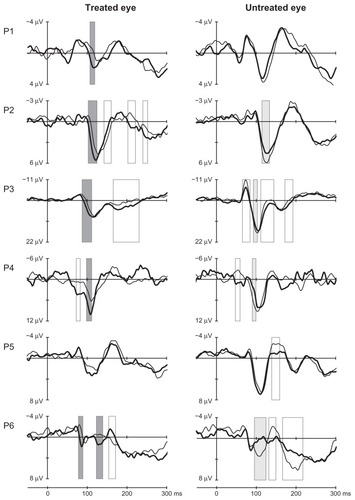Figures & data
Table 1 Patient characteristics and their visual acuity before and after anti-VEGF treatment
Figure 1 Optical coherence tomographic (OCT) images illustrating retinal thickness of each individual patient (P1–P6) before and after injections (18 weeks in between images).
Abbreviations: P, patient; OD, right eye; OS, left eye.

Table 2 Retinal thickness (μM) in individual patients measured with optical coherence tomography before and after injection in the treated and nontreated eyes
Figure 2 VEP in the Oz-FCz derivation before (thin line) and after (thick line) anti-VEFG treatment from the treated and nontreated eyes of six patients.
Abbreviations: VEP, visual evoked potentials; P, patient number.

Figure 3 Grand average waveforms of individual waveforms from .
